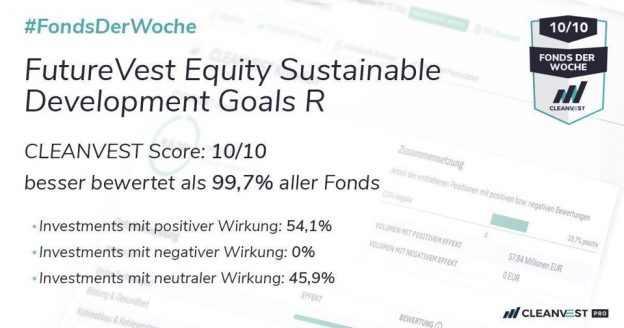Finfluencers: 14x new research on CO2 storage, climate learnings, sustainable bonds, diversity, impact investing, active investing, and finfluencers by Laurens Swinkels, Alex Edmans, Caroline Flammer, Simon Glossner, Jeffrey Ptak, Michael Kitces, Norman Schürhoff, Christian Klein et al. (# indicates the number of SSRN downloads on May 9th, 2023)
Ecological and social research
CO2 Storage? CO2 storage or utilization? A real options analysis under market and technological uncertainty by Hanne Lamberts-Van Assche, Maria Lavrutich, Tine Compernolle, Gwenny Thomassen, Jacco Thijssen, and Peter M. Kort as of April 24th, 2023 (#8): “First, the presence of technological and market uncertainties … increase the barriers to invest in CCS or CCU. Second, when the firm anticipates the arrival of a more attractive CCU solution in the future, it will not postpone the investment in CCS. …. Third, higher uncertainty in the CO2 price, i.e. higher σ, increases the investment thresholds, while a higher trend in the CO2 price, i.e. higher α, decreases the investment thresholds for CCS and CCU. … First, policymakers should aim to ensure stability and predictability in the CO2 price, to lower the volatility σ of the CO2 price. Reducing the market uncertainty will lower the CO2 price investment thresholds for CCS, CCU and CCUS. Second, they should also commit to an increasing growth rate in the CO2 price in the EU ETS. When firms expect higher growth rates for the CO2 price in the future, they are more favourable to invest in CCS, CCU and CCUS sooner. Finally, policymakers should realize that CCU and CCS can be complementary solutions” (p. 32/33).
Climate-information matters: Complexity and Learning Effects in Voluntary Climate Action: Evidence from a Field Experiment by Johannes Jarke-Neuert, Grischa Perino, Daniela Flörchinger, and Manuel Frondel as of April 16th, 2023 (#26): “Exploiting the fact that timing matters, we have empirically investigated how individuals respond to (a) having the choice about the timing of their voluntary abatement efforts in the form of retiring an emission allowance and to (b) being confronted with either no, simple but counter-intuitive, or complex but intuitive information about the effectiveness-ranking of options. To this end, we have conceived a field experiment with more than four thousand participants that was embedded in a survey conducted in Germany in 2021 … Adding information did not systematically affect contributions overall, but substantially increased their effectiveness. … The uptake of information provided was most pronounced by individuals who most strongly believed in the opposite ranking“ (p. 15/16).
German pension wealth: Accounting for pension wealth, the missing rich and under-coverage: A comprehensive wealth distribution for Germany by Charlotte Bartels, Timm Bönke, Rick Glaubitz, Markus M. Grabka, and Carsten Schröder as of April 25th, 2023 (#13): “We found that including pension wealth increases the wealth-income ratio of German households from 570% to 850%. … pension wealth plays an equalizing role: The wealth share of the bottom 50% increases from 2% to 9% when including pension wealth, whereas that of the top 1% declines from 30% to 20%. However … Pension wealth is not transferable and, hence, differs significantly from marketable assets such as financial investments or housing“ (p. 12).
Responsible investment research: Finfluencers
Green and other bonds: Social, Sustainability, and Sustainability-Linked Bonds by Gino Beteta Vejarano and Laurens Swinkels from Robeco as of April 24th, 2023 (#107): “… several variations of sustainable bonds appearing in the market, where either use of proceeds are earmarked for sustainable activities, or coupon payments depend on sustainability targets. Despite the fast growth, the sustainable bond market is currently less than 4% of the overall bond market, with the green bond market accounting for half of it. Social and sustainability bonds tend to be issued by government or government-related institutions and, therefore generally have higher credit quality than sustainability-linked bonds, which are much more popular in the corporate sector. … The yields on sustainable bonds tend to be only marginally lower than those on conventional bonds with a similar risk profile …. Since correlations between returns on sustainable and conventional bonds are high, the risk and return profile of the portfolio is unlikely to change much when certain conventional bonds are replaced with ESG bonds with similar characteristics …” (p. 28).
Growing greenium? How Large is the Sovereign Greenium? by Sakai Ando, Chenxu Fu, Francisco Roch, and Ursula Wiriadinata as of April 19th, 2023 (#22): “This paper is the first empirical study to estimate the sovereign greenium using both the twin bonds issued by Denmark and Germany, and panel regression analysis. While the estimated greenium in this paper is not large, it has been increasing over time alongside the level of sovereign green bond issuances. … It remains an open question whether the purpose of the project associated with the green bond is a key determinant of the greenium, and whether green bonds have resulted in the climate outcomes they intended to achieve” (p.9/10).
Good diversity: Diversity, Equity, and Inclusion by Alex Edmans, Caroline Flammer, and Simon Glossner as of May 2nd, 2023 (#723): “… demographic diversity measures may miss many important aspects of DEI. … Companies with high DEI enjoyed recent strong financial performance and are less levered, suggesting that a strong financial position gives companies latitude to focus on long-term issues such as DEI that may take time to build. Small growth firms also exhibit higher DEI scores, consistent with either greater incentives or ability to improve DEI in such firms. … we find that the percentage of women in senior management is significantly positively associated with DEI perceptions, and this result holds regardless of the gender or ethnicity of the respondents. … DEI is also unrelated to general workplace policies and outcomes, suggesting that DEI needs to be improved by targeted rather than generic initiatives. … we find no evidence of a link between DEI and firm-level stock returns” (p. 25/26).
Impact measure: The Impact Potential Assessment Framework (IPAF) for financial products by Mickaël Mangot and Nicola Stefan Koch of the 2o investing initiative as of March 2023: “The Impact Potential Assessment Framework (IPAF) assesses financial products based only on their actions to generate real-life impact … It is exclusively based on public information provided by the product manufacturers … It is applicable to various types of financial products … serves as a tool against impact-washing by displaying practical limitations of self-labelled “impact products … First, it assesses the (maximum) impact potential of financial products based on impact mechanisms they supposedly apply (in relation to communicated elements in marketing documents). Those impact mechanisms are the ones widely documented by academic research: Grow new/undersupplied markets, Provide flexible capital, Engage actively, Send (market and nonmarket) signals. Second, it evaluates the implementation of that impact potential based on the intensity with which financial products action the various impact mechanisms in connection to success factors documented by academic research”. My comment: I try to provide as much impact as possible with my public equity mutual fund, see https://futurevest.fund/
Green demand: Nachfrage nach grünen Finanzprodukten, Teilbericht der Wissensplattform Nachhaltige Finanzwirtschaft im Auftrag des Umweltbundesamtes von Christian Klein, Maurice Dumrose, Julia Eckert vom April 2023: “… In this project report, the development of the sustainable investment market, especially in the retail sector, is presented and the characteristics of sustainable investments are introduced. Retail investor motives for investing in such products and the requirements retail investors have for sustainable investment products are highlighted. Barriers for retail investors and investment advisors are identified in the area of sustainable investments. Finally, based on these findings, recommendations for political action are proposed, which can lead to a reduction of these barriers and thus increase the acceptance of sustainable investments” (abstract). .. “Die Literatur zeigt eindeutig, dass insbesondere die Fehlannahme der Anlageberatenden, Retail-Investierende hätten kein Interesse an Nachhaltigen Geldanlagen und fragen deshalb nicht aktiv im Beratungsgespräch nach diesen, eine Barriere darstellt. Die Untersuchung von Klein et al. zeigt in diesem Zusammenhang deutlich, dass diese Barriere durch eine verpflichtende Abfrage der Nachhaltigkeitspräferenz der Retail-Investierenden überwunden werden kann. Ferner zeigt der aktuelle Forschungsstand, dass insbesondere ein zu geringes Wissen im Bereich Nachhaltige Geldanlage die zentrale Barriere für Anlageberatende darstellt. Hohe Transaktions- sowie Informationskosten, ein fehlendes kundengerechtes nachhaltiges Produktangebot, Zweifel an dem Beitrag, den Nachhaltige Geldanlagen zu einer nachhaltigen Entwicklung leisten, hohe wahrgenommene Komplexität, Wahrnehmung von Green Washing, Angst vor Haftungsrisiken, potentielle Reputationsrisiken und keine einheitliche bzw. gesetzliche Definition des Begriffs Nachhaltige Geldanlage konnten als weitere Barrieren identifiziert werden“ (S. 42/43).
2 ESG types? Sustainable investments: One for the money, two for the show by Hans Degryse, Alberta Di Giuli, Naciye Sekerci, and Francesco Stradi as of April 26th, 2023 (#66): “Analyzing a representative sample of Dutch households, we document the existence of two types of households: those that invest in sustainable products for social reasons (social sustainable investors) and those that do it for financial reasons (financial sustainable investors). The two groups are of equal importance but are characterized by different features. The social sustainable investors have higher social preferences, level of education and trust, and are more likely left-wing and less risk-loving. Reliable labelling, reducing greenwashing concerns, and emphasizing typical left-wing thematic linked to sustainable investments is positively related to sustainable investments by social sustainable investors, whereas hyping the benefit in terms of returns of sustainable investments through social media and word of mouth is positively associated with the investment decisions of financial sustainable investors” (abstract).
Traditional and fintech investment research: Finflucencers
Difficult 1/n?: Is Naïve Asset Allocation Always Preferable? by Thomas Conlon, John Cotter, Iason Kynigakis, and Enrique Salvador as of April 28th, 2023 (#90): “For allocation within asset classes, we find only limited evidence of outperformance in terms of risk-adjusted returns for optimized portfolios relative to the naïve benchmark … we find statistical and economic evidence that a bond portfolio that minimizes risk is the only case that provides outperformance of the 1/n rule. This evidence points to challenges in outperforming the equally weighted portfolio, especially when allocating among equities and REITs. When allocating across asset classes, we find that minimum-variance portfolios that include bonds exhibit higher Sharpe ratios than the equally weighted portfolio. These findings also carry over to downside risk, where optimal strategies have a lower VaR, both economically and statistically, than that associated with the equally weighted approach. Allocations across different asset classes also have lower rebalancing requirements, which means they are less affected by the transaction costs” (p. 26). My comment: My equity portfolios are all equal weighted. The most passive world market portfolio should be uses as reference instead of naïve asset allocation which does not work well because auf unclear asset class definitions, see Das-Soehnholz-ESG-und-SDG-Portfoliobuch.pdf (soehnholzesg.com). Regarding optimization limits see Kann institutionelles Investment Consulting digitalisiert werden? Beispiele. – Responsible Investment Research Blog (prof-soehnholz.com)
Active disaster: How Can Active Stock Managers Improve Their Funds’ Performance? By Taking a Vacation—a Long One by Jeffrey Ptak from Morningstar as of May 2nd, 2023: “While active large-cap managers made thousands of trades worth trillions of dollars over the 10-year period ended March 31, 2023 … The funds’ actual returns were almost identical to what they’d have been had those managers made no trades at all and were worse after adjusting for risk. And that was before fees were deducted”. My comment: With my portfolios/fund I try to trade as little as possible
Wealthtech changes: The Kitces AdvisorTech Map Highlights The Evolving Landscape As It Turns 5 Years Old by Michael Kitces and ben Henry-Moreland as of May 1st, 2023: “… there now 409 different software solutions … with the total number of solutions more than doubling … Some highlights of these AdvisorTech evolution trends over the past 5 years include: The near-disappearance of the ‚B2B robo‘ tools as advisors demanded better onboarding capabilities but showed an unwillingness to pay for them on top of their broker-dealer or custodial providers … portfolio management tools have increasingly bought or built performance reporting and performance reporters acquired most of the available trading and rebalancing tools in a massive consolidation into what is now the „All-In-One“ category … The growth of the Behavioral Assessments category … The proliferation of specialized financial planning software …The explosion in advisor marketing technology …”
Bad influences: Finfluencers by Ali Kakhbod, Seyed Kazempour, Dmitry Livdan, and Norman Schürhoff as of May 4th, 2023 (#178): “… instead of following more skilled influencers, social media users follow unskilled and antiskilled finfluencers, which we define as finfluencers whose tweets generate negative alpha. Antiskilled finfluencers ride return and social sentiment momentum, which coincide with the behavioral biases of retail investors who trade on antiskilled finfluencers’ flawed advice. These results are consistent with homophily in behavioral traits between social media users and finfluencers shaping finfluencer’s follower networks and limiting competition among finfluencers, resulting in the survival of un- and antiskilled finfluencers despite the fact that they do not provide valuable investment advice. Investing contrarian to the tweets by antiskilled finfluencers yields abnormal out-of-sample returns, which we term the “wisdom of the antiskilled crowd.”“ (p. 40).
Literacy returns: Financial literacy and well-being: The returns to financial literacy by Sjuul Derkx, Bart Frijns, and Frank Hubers as of April 25th, 2023 (#21): “Using a panel data set of Dutch households over 2011-2020, we find that initial (2011) … financial literacy positively affects wealth accumulation for up to four years into the future, showing that there is mean-reversion in financial literacy when one no longer invests in it. Considering different age brackets, we document that financial literacy among the young results in higher income generation, while financial literacy among the old leads to greater wealth accumulation” (abstract).
………………………………..
Advert for German investors: “Sponsor” my research by investing in and/or recommending my article 9 mutual fund. The fund focuses on social SDGs and midcaps, uses separate E, S and G best-in-universe minimum ratings and broad shareholder engagement. The fund typically scores very well in sustainability rankings, e.g. see this free new tool, and the performance is relatively good: FutureVest Equity Sustainable Development Goals R – DE000A2P37T6 – A2P37T










